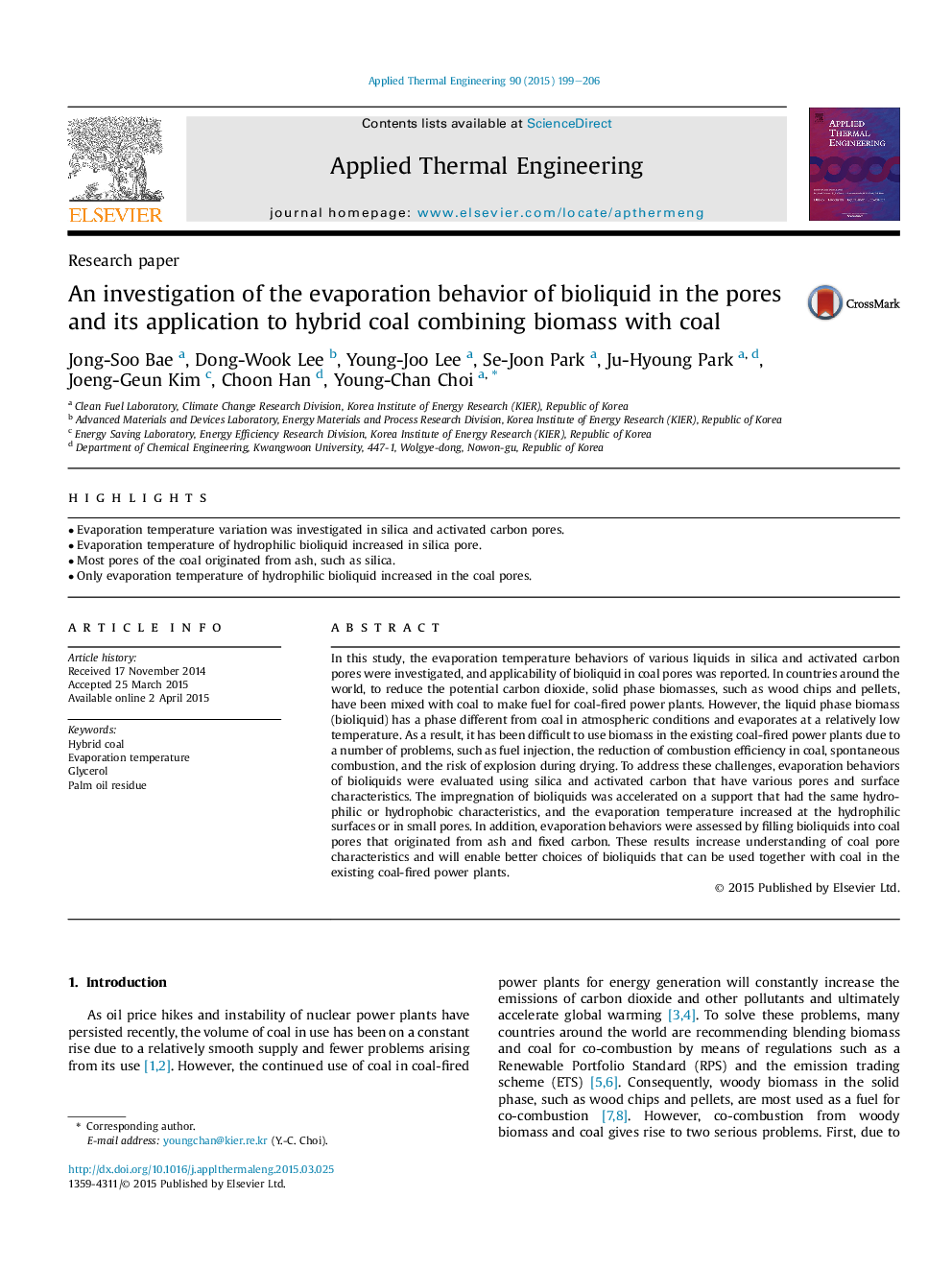| Article ID | Journal | Published Year | Pages | File Type |
|---|---|---|---|---|
| 7048826 | Applied Thermal Engineering | 2015 | 8 Pages |
Abstract
In this study, the evaporation temperature behaviors of various liquids in silica and activated carbon pores were investigated, and applicability of bioliquid in coal pores was reported. In countries around the world, to reduce the potential carbon dioxide, solid phase biomasses, such as wood chips and pellets, have been mixed with coal to make fuel for coal-fired power plants. However, the liquid phase biomass (bioliquid) has a phase different from coal in atmospheric conditions and evaporates at a relatively low temperature. As a result, it has been difficult to use biomass in the existing coal-fired power plants due to a number of problems, such as fuel injection, the reduction of combustion efficiency in coal, spontaneous combustion, and the risk of explosion during drying. To address these challenges, evaporation behaviors of bioliquids were evaluated using silica and activated carbon that have various pores and surface characteristics. The impregnation of bioliquids was accelerated on a support that had the same hydrophilic or hydrophobic characteristics, and the evaporation temperature increased at the hydrophilic surfaces or in small pores. In addition, evaporation behaviors were assessed by filling bioliquids into coal pores that originated from ash and fixed carbon. These results increase understanding of coal pore characteristics and will enable better choices of bioliquids that can be used together with coal in the existing coal-fired power plants.
Keywords
Related Topics
Physical Sciences and Engineering
Chemical Engineering
Fluid Flow and Transfer Processes
Authors
Jong-Soo Bae, Dong-Wook Lee, Young-Joo Lee, Se-Joon Park, Ju-Hyoung Park, Joeng-Geun Kim, Choon Han, Young-Chan Choi,
